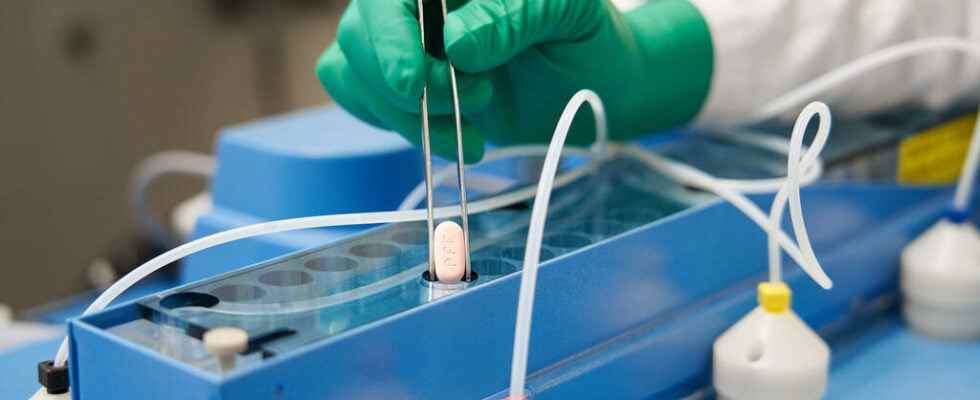Paxlovid from the Pfizer laboratory is now authorized in France. The High Authority for Health gave the green light on Friday January 21. It is the first treatment against Covid-19 available in pharmacies in the country two years after the start of the pandemic and the State has already ordered 500,000 doses for 2022. If the American giant Pfizer claims that its drug can “ change the game In the pandemic, there are many contraindications and knowledge about this new treatment remains limited.
On presentation of a prescription issued by a general practitioner, it will soon be possible to obtain Paxlovid, the first treatment against Covid-19 available in pharmacies. Rollout of the drug is expected by the end of the month.
This antiviral works by reducing the ability of the virus to replicate and thus limits the infection. All you need is three tablets, twice a day for five days, to be taken as soon as possible after a positive test for Covid-19 and within five days of the onset of symptoms.
► To read also: Merck laboratory launches anti-Covid pill for low-income countries
A high risk of interactions
However, the High Authority for Health only authorizes this drug for adults with a mild form but at risk of developing a severe form of the disease: for the immunocompromised, those with cancer or trisomy 21 for example, but also anyone over the age of 65 with a comorbidity (diabetes, obesity, or high blood pressure, for example). The drug is also not recommended for pregnant women.
► To listen also: Healthcare industries: a world of opportunities?
According to the preliminary results of a clinical study presented by the manufacturer, Paxlovid reduces the risk of hospitalization and death by 89%. However, the full data has not yet been released and health authorities point to a high risk of interactions with other drugs, which could reduce the number of people eligible for treatment.
In France, only one other drug is currently authorized as a curative treatment for Coronavirus, Sotrovimab, a monoclonal antibody injected intravenously in the hospital.
